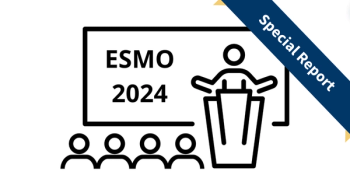
Learning from COVID Outbreaks in Hospital Cancer Units
Hospital oncology units have been among the most at-risk areas of hospitals with multiple outbreaks having occurred since the virus was first introduced.
Across the United States, from 2020 to present, hospitals have been at the forefront of the battle against COVID-19. Oncology units have been among the most at-risk areas of hospitals with multiple outbreaks having occurred since the virus was first introduced.
COVID Outbreaks in Cancer Populations
New York
With 54 persons infected with COVID-19, Albany Medical Center (Albany Med) stopped admission to their oncology unit in February of 2021 in an effort to resolve what was the second of 3 COVID-19 outbreaks in the unit. The first occurrence was at the start of the pandemic in November 2020.1
Although the issue had been ongoing for months, the shutdown was brought on by complaints by staff to the New York State Nurses Association (NYSNA) and the Occupation Safety and Health Administration, according to a press release issued by NYSNA shortly after the shutdown. It was reported at that time that 28 of the infected individuals were members of Albany Med staff and 26 were patients. Several patients who were infected had cases so severe that intubation was required, and 1 infected individual died from COVID-19-related complications.
“When any case of communicable disease are identified on a unit, Albany Medical Center immediately initiated a thorough response in partnership with the State Department of Health, as it was in these cases. This response included testing staff and patients every 3 days for COVID-19 and, if positive, patients were placed on appropriate precautions and staff were sent home,” a spokesperson for Albany Med told Targeted Oncology™ (TO) in an interview.
Based on complaints raised by Albany Med staff, the outbreaks could have been prevented if the staff had access to adequate personal protection equipment, or had the hospital followed infection protocol, including patient cohort protocols. Lastly, nurses complained to NYSNA that management did not heed their warnings about what was happening on the frontline of the pandemic.
According to the Albany Med spokesperson, the hospital responded promptly once they noticed the number of COVID-19 cases on their oncology unit.
“Patients on the unit were kept in private rooms as much as possible and wore masks when providers were in the room; providers wore masks, too. Enhanced cleaning protocols were implemented on these rooms, which included the use of hydrogen peroxide between patient stays. The unit was closed to new admissions and a limited number of staff members worked on the unit. During the pandemic, any issues have been promptly investigated by epidemiology and nursing supervision. Safety is our top priority—and we count on our staff to follow those policies for everyone’s protection,” the Albany Med spokesperson explained.
The New York State Department of Health confirmed that they were aware of the outbreaks since the beginning.
“To help protect patients on medically-sensitive units such as oncology, the New York State Department of Health recommends all health care facilities adhere to state and federal CDC guidance pertaining to infection control and COVID-19. Albany Medical Center Hospital first notified the Department of a COVID-19 outbreak in an oncology unit in November 2020. The Department’s epidemiology team worked closely with the hospital to ensure the facility was properly implementing COVID-19 infection prevention and control measures. The facility has reported no additional cases associated with this outbreak,” a spokesperson from the New York State Department of Health told TO, in response to an inquiry about Albany Med.
More than 600 miles away from Albany Med, another oncology-unit outbreak was reported at Duke Raleigh Hospital in Raleigh, NC.
North Carolina
On March 23, 2021, multiple news outlets were informed by spokesperson Sarah Avery that Duke Raleigh Hospital had closed their oncology ward to visitors due to a COVID-19 outbreak affecting 20 confirmed patients and staff. The outbreak was said to have been confined to 1 wing of the fifth-floor unit.
The immediate plan of action reported by the spokesperson was testing all patients and staff on the oncology unit and disinfection of the rooms and common areas. At the time the cases were identified, Duke Raleigh did not comment on the exact number of cases.
The outbreak in Duke Raleigh Hospital’s oncology unit is part of a larger issue in the county. To date, more than 290,000 cases of COVID-19 have been reported in Wake County. Of those diagnosed with COVID-19, 1050 have died. Raleigh, NC has the fifth highest rate of COVID-19 in Wake County, according to the North Carolina Department of Health and Human Services.2
During a virtual news conference, hosted by the Wake County Health Department on August 25, 2021, Timothy M. Plonk, MD, an emergency medicine physician at Duke Raleigh Hospital, explained how the hospital was impacted by the COVID-19 pandemic.3
“This past year has presented incredible challenges for our hospital, our providers, nurses, emergency services, and to our community. It's hard not to be a little bit disappointed at this point with our current position. We've had a lot of successes. But just as we felt like there was some light at the end of the tunnel, over the past several weeks, we seem to be thrust back into another wave of this pandemic,” Plonk stated. “Compounding all this I think we see a county that is one of the fastest growing counties in the region, giving us a lot more people in general to care for,” he added.
The Duke Raleigh Hospital spokesperson declined to speak with TO about the 2021 outbreak further.
Lessons from Research
In North America, as well as in China and parts of Europe, research has clearly demonstrated how COVID-19 impacts patients with cancer. A comprehensive review of the research conducted between the start of the pandemic through June 2020 showed that patients with cancer are at a higher risk of mortality, as well as an increased risk of admission to intensive care units in comparison with patients who do not have cancer.4
“Patients with immunocompromise are at higher risk for severe COVID infection and COVID-related mortality than the general population. These individuals may not respond as robustly to vaccinations and boosters as others, though some do, and it is important to recommend vaccines and boosters in accordance with guidance. Thankfully, outcomes have improved with time for a variety of reasons, but these individuals remain at higher risk than others and deserve continued attention,” William Wood, MD, a hematologist/oncologist at University of North Carolina-Chapel Hill explained to TO in an interview.
The comprehensive review looked at 2106 patients whose median ages range between 63.1 years and 69.0 years. All-cause mortality was higher in patients with cancer compared with non-cancer patients (relative risk [RR], 1.66; 95% CI, 1.33-2.07; P < .0001). The need to be admitted to an ICU was also higher for patients with cancer compared with the general COVID-19 patient population (RR, 1.56; 95% CI, 1.31-1.87; P < .0001).
The RR of complications and mortality may be increased in patients who have had certain treatment modalities.
“Patients undergoing active treatment such as chemotherapy or transplant are at higher risk for acquiring a variety of viral, bacterial, and sometimes fungal infections,” Wood said.
Research has also homed in on specific cancer populations, like patients with hematologic malignancies who are also positive for COVID-19. On systematic review and meta-analysis of 3377 patients found a high risk of death in these patients, even for those receiving systemic anticancer therapy.
“At the time of the analysis, there had been little aggregation of outcomes for patients with hematologic malignancies and COVID-19, but there was emerging concern that patients with hematologic malignancies were at high risk for adverse outcomes including severe disease (ICU admission and ventilation) and mortality,” said Wood, who is a co-author of the study.
“We found from 39 studies, including nearly 3400 patients form around the world, that the risk of death among adult patients, many of whom were hospitalized, was quite high with an overall estimate of 34%. Older patients [> age 60] had a higher risk of death than younger patients. Pediatric patients had a much lower risk of death [4%]. We did not find that recent cancer treatment significantly increased the risk of death, Wood explained.
According to Wood et al, findings from the study underscore the importance of COVID-19 prevention among patients with hematologic malignancies and other cancers. To do so successfully, implementation of infection-control protocols, physical distancing, and appropriate PPE are essential.
“I would advise that hematologists/oncologists follow guidance in recommending vaccines and boosters, that prophylactic therapies [such as Evusheld] are considered in appropriate circumstances, and that immunocompromised patients with newly-diagnosed infection are considered for candidacy for one of the newer therapeutics,” Wood told TO.
Preventing COVID in Cancer Populations
Prevention of COVID, in general, started with the FDA taking action to accelerate the development of vaccinations. Now that multiple vaccines are available, responsibility lies with oncology clinicians to encourage vaccination for patients with cancer and to closely monitor them.
“We recognize the need to recommend precautions and, sometimes, preventive medications for certain kinds of infections in this group. The risk of individuals in this group acquiring the SARS-CoV-2 infection remains a concern,” Wood stated.
More outbreaks in cancer populations have been identified since 2020, including in the oncology unit at Sherbrooke Hospital in Quebec, Canada, and the oncology unit at the Moncton Hospital in New Brunswick, New Jersey. These outbreaks further stress the importance of prevention.
REFERENCES:
1. New York State Department of Health orders emergency measures inside Albany Medical Center’s oncology unit after covid infects dozens of patients and staff. News release. February 16, 2021. Accessed April 1, 2022. https://bit.ly/3KH1mLg
2. North Carolina COVID-19 Dashboard. North Carolina Department of Health and Human Services website. Updated April 6, 2022. Accessed April 8, 2022. https://bit.ly/36kLwXO
3. Wake County Health Department. How the Recent COVID-19 Surge is Impacting Hospital Capacity. Wakegov.com. August 25, 2021. Accessed April 8, 2022. https://bit.ly/3xC0SCy
4. Madan A, Siglin J, Khan A. Comprehensive review of implications of COVID-19 on clinical outcomes of cancer patients and management of solid tumors during the pandemic. Cancer Med. 2020;9(24):9205-9218. doi:10.1002/cam4.3534.







































